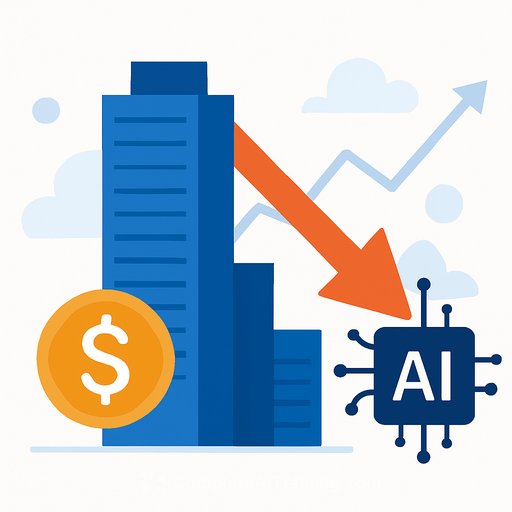How artificial intelligence is reshaping marine insurance
AI is changing how carriers assess risk, set price, and settle claims across marine lines. The advantage goes to teams that run clean operations, collect quality data, and ask sharper questions about how decisions are made.
Underwriting: deeper signal, cleaner pricing
Carriers are combining claims history, AIS and telematics, engine and hull sensor feeds, weather and routing data, and inspection reports to score risk with more precision. That shifts pricing from broad averages to dynamic, risk-based rates tied to how a fleet actually operates.
Well-run vessels with strong safety discipline, reliable maintenance, and good data can see better terms. Weak records, gaps in data, or recurring deficiencies are more likely to draw surcharges, exclusions, or tighter warranties.
Claims: faster, higher-confidence decisions
Automation is speeding the journey from first notice of loss through triage, documentation, and settlement. Image and video analysis can assess hull and cargo damage; anomaly detection flags inconsistencies and potential fraud.
In marine, onboard CCTV and sensor streams can be analyzed near real time to reconstruct incidents, detect unsafe routes, or predict equipment failure. Human oversight still matters, but cycle times drop when adjusters review stronger evidence packages.
Operations and service: less busywork, more judgment
Carriers are using AI to summarize files, extract entities from survey PDFs, route tasks, and respond to routine queries. That frees specialists to focus on complex risks, coverage crafting, and negotiations that actually move the needle.
What insurance buyers should do now
- Ask pointed questions: How did AI influence your rate, deductible, or exclusions? Which data sources were used (and how recent)? How are models validated and monitored for drift or bias? Do you have a right to human review and an explanation for adverse decisions?
- Compare more than price: How is AI used in claims (triage, damage estimation, fraud)? What service commitments come with these tools (e.g., decision timelines)? What audit or appeal options exist if a model gets it wrong?
- Run a tight operation: Document safety programs, planned maintenance, crew training, and near-miss reporting. Close out class and PSC deficiencies quickly and keep evidence organized.
- Know your data: Inventory what you collect (AIS/telematics, engine and fuel metrics, voyage logs, inspections). Ensure accuracy, time stamps, and data lineage. Be ready to provide context so numbers reflect reality, not noise.
- Protect privacy and security: Align cyber controls with maritime guidance such as the IMO's cyber risk management recommendations (IMO cyber security). Set clear rules for how your data can be used, shared, and retained.
- Work with experts: Partner with brokers and advisors who can translate model outputs, push back on weak rationales, and negotiate terms that reflect your true risk profile.
Data to have ready for underwriting and claims
- Vessel specs, maintenance/CMMS logs, class and PSC history
- Crew certifications, training cadence, fatigue management policies
- Sensor and performance data (engine health, fuel use, speed, alarms)
- Voyage and weather routing records, port calls, deviation notes
- Safety KPIs, near-misses, incident root-cause analyses
- Claims history with outcomes, costs, recovery/subrogation details
Guardrails to request from carriers using AI
- Governance: Documented policies, model inventory, monitoring, and periodic reviews aligned with frameworks like the NIST AI RMF.
- Data rights: Clarity on ownership of your telemetry, video, and reports; consent for secondary use; retention and deletion timelines.
- Explainability: A plain-English rationale for pricing or claims decisions, including key drivers and any risk factors you can improve.
- Human-in-the-loop: Escalation paths and the ability to appeal or override automated outputs.
- Security: Encryption in transit/at rest, vendor due diligence, and controls consistent with ISO 27001 or equivalent.
- Fairness checks: Testing to reduce unintended bias in datasets and outcomes across fleets, flags, routes, or crew profiles.
For insurance teams: where to start
- Prioritize high-value use cases: loss triage, damage estimation, salvage and general average modeling, subrogation targeting, and port/route accumulations.
- Integrate core signals: AIS and weather feeds, satellite imagery, survey and class data, and historical claims.
- Build feedback loops: feed closed-claim outcomes and inspection results back into models; track lift vs. baseline.
- Manage drift: set thresholds for retraining and alerts when performance slips.
- Upskill teams: create playbooks for underwriting and claims staff to work with AI. If you need structured training by role, explore AI courses by job.
Bottom line
AI is already influencing rates, terms, and settlements in marine insurance. Operators with disciplined safety, clean data, and smart questions will earn better outcomes - and keep them.
Your membership also unlocks:






